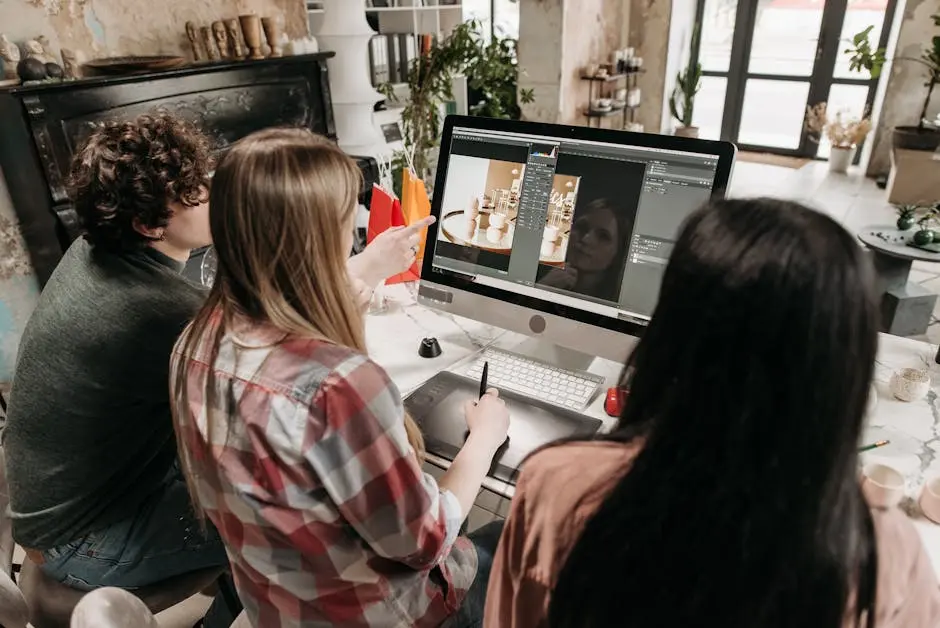How Can UX/UI Design Tools Help Boost Productivity?

In today's fast-paced digital world, boosting productivity is a top priority for many organizations. One effective way to achieve this is by leveraging UX/UI design tools. In this blog post, we'll explore how these tools can aid in enhancing productivity through improved design processes and team efficiencies.
Understanding UX/UI Design Tools
Before diving into their impact on productivity, it's important to understand what UX/UI design tools are. These tools include software and applications that help designers create user interfaces and experiences efficiently, ensuring intuitive interaction between users and applications.
Typically, UX/UI tools offer a wide array of functionalities, from basic wireframing to sophisticated design systems. They provide everything needed, from creating initial mockups to finalizing polished designs ready for development. By using these tools, designers can better map user journeys and anticipate user interaction, building interfaces that encourage engagement and usability.
The power of these tools also lies in their adaptability. With the rapid pace at which user expectations and technologies evolve, it's crucial that UX/UI tools keep up, offering updates and improvements that make tackling new challenges possible. The best tools are regularly refined to suit the dynamic nature of digital design environments.
Enhancing Design Efficiency
UX/UI design tools streamline the design process by providing pre-built templates, elements, and streamlined workflows. This reduces the time spent on repetitive tasks, allowing designers to focus on creative solutions.
For instance, using Sketch, designers have access to a comprehensive library of elements and the ability to create scalable vector assets, significantly speeding up the design process. These tools are particularly praised for allowing seamless updates and consistent style management throughout a project, reducing the need for revisions.
Efficiency is also boosted through the automation capabilities of modern UX/UI tools. Automated features like integrated prototyping within Figma reduce tedious manual labor, making it easier to quickly iterate on ideas and present polished concepts to clients.
Facilitating Team Collaboration
Modern design tools offer collaborative features that let team members work on projects simultaneously. This eliminates the back-and-forth typically found in traditional design processes, leading to faster project completion.
Platforms such as Miro facilitate real-time collaboration, enabling teams to map out user journeys together without the need for frequent physical meetings. This level of interactivity encourages a more integrated approach, where every team member's insights and feedback contribute directly to the design process.
Moreover, with tools like Slack incorporated into the mix, communication is not only streamlined but made richer through integrated discussions, file sharing, and instant feedback mechanisms. This allows design teams to remain cohesive and agile, no matter where they are physically located.
Improving Communication and Feedback
These tools enhance communication with stakeholders through interactive prototypes and visual representations, allowing for more effective feedback and amendments early in the process.
Interactive prototypes created using tools like Adobe XD give stakeholders a tangible sense of the final product much earlier in the design cycle. This hands-on experience minimizes misunderstandings and accelerates the iteration cycle by pinpointing potential issues before substantial development begins.
By visualizing complex design ideas with ease, these tools make it easier for non-design team members to grasp and contribute to the project, ensuring alignment on the design vision throughout the organization's hierarchy.
Empowering Innovation
The myriad of features available in modern UX/UI tools inspires creativity and innovation, providing designers with new ways to solve problems and improve user experiences.
Tools such as Procreate offer designers highly customizable and limitless creative expression across various mediums. This encourages exploration and experimentation, which are essential for creating innovative user experiences that stand out.
Moreover, AI-powered tools like UX Pilot offer fresh perspectives by generating wireframes and design suggestions, helping designers explore novel concepts and expedite the creative process. Such automation not only enhances creative potential but also broadens the scope of what can be achieved through UX/UI design.
Embrace UX/UI Design Tools for Enhanced Productivity
UX/UI design tools are not just a means to create aesthetically pleasing designs but a crucial asset in enhancing productivity. By streamlining workflow, fostering collaboration, and boosting innovation, these tools play a pivotal role in the modern design process. Embracing these tools could lead to more efficient project delivery and improved outcomes across the board.
Roam: Run your design business, not just your projects. Intuitive business management tools for graphic designers


.png)





